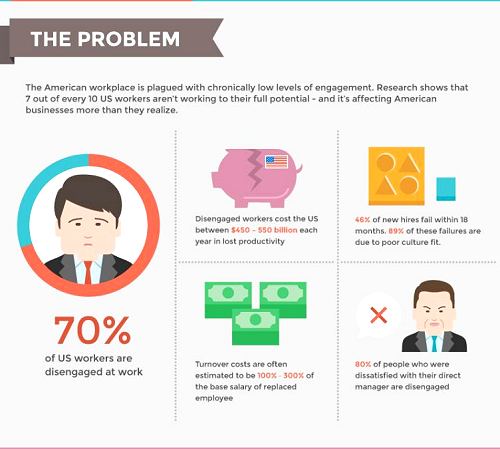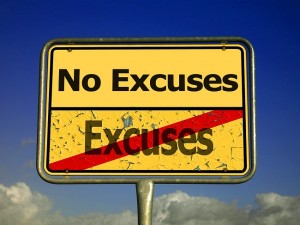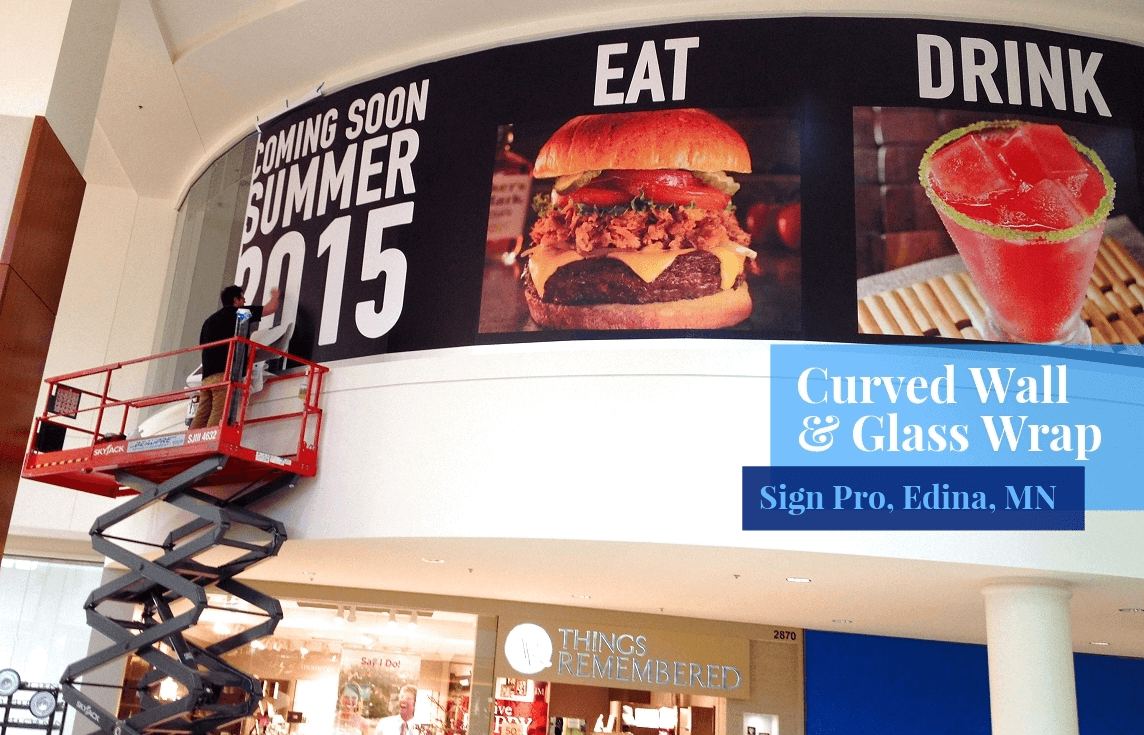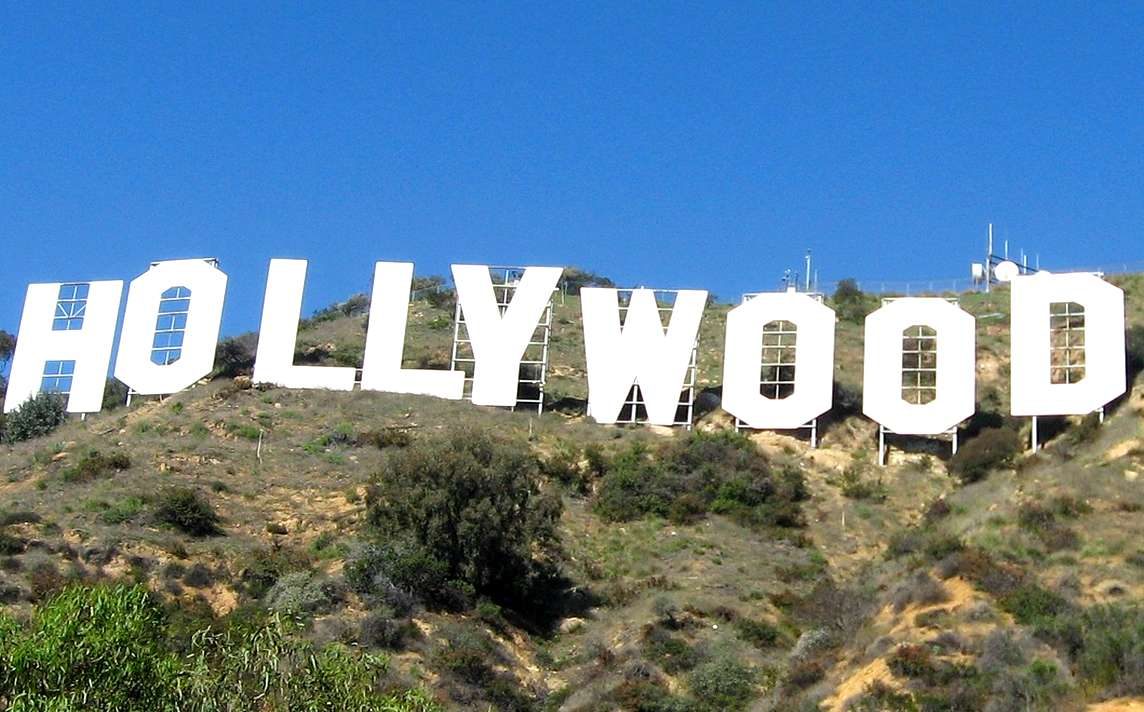Branding is more than just a logo; it’s the story, personality, and heartbeat of your business. When done right, it makes people feel like they belong with you. For small business owners, the challenge lies in carving out a space that feels authentic while also standing out in a crowded marketplace.
Mustang Sign Group Achieves G7 Master Certification
Mustang Sign Group, a Sign Biz Member located in Kennewick, WA, has earned the G7 Master Qualification Seal demonstrating that the company uses the most modern technology.
What 2016 Means for 2017
Busiest December in recent history caps a high-growth year. Plenty of evidence points to six strong trends leading into 2017, ranging from value building strategies to differentiation by design. A look back at some of 2016 highlights finishes with some valuable takeaways in this article.
Color Rendering DP Needs Sunshine on a Cloudy Day
We are going to demystify Perceptual Color, and CRI (Color Rendering Index) in terms that should lead to good decisions, and make your shop vibrant at the same time!
Wall Graphics: Impressions That Stick!
Wall graphics and murals are “In” and they are powerful purveyors of…
Onboarding in a Sign Shop
Onboarding, also known as organizational socialization, refers to the mechanism through which new employees acquire the necessary knowledge, skills, and behaviors to become effective organizational members and insiders.
Thus states the official definition developed by HR gurus, and published by Wikipedia. Most people think of onboarding as a one day or one week event, that commences with the new hire’s first day on the job. But step back a moment, and note that there is great cost to bringing on a new employee, and you have to get it right. So attracting the right hire is actually step one. And that begins with your company’s image, brand, and promise to clients.
So what do employees want? A new survey of more than 600 employees, conducted by the Society for Human Resource Management found 72% of employees rank “respectful treatment of all employees at all levels” to be the most important factor in job satisfaction.
The other factors in the top 5 are trust between employees and senior management (64%); benefits (63%), compensation/pay (61%); and job security (59%). As for the actual work itself? It ranked No. 11.
 Knowing that your company culture and respectful treatment from management are top priorities, we can begin. Fact: 46% of people will fail within the first 18 months of a new job mainly because of poor culture fit. Before you let that little voice in the back of your head argue that you don’t want to coddle employees or treat them with kid gloves, remember this: When you give good treatment, you are actually keeping your costs down.
Knowing that your company culture and respectful treatment from management are top priorities, we can begin. Fact: 46% of people will fail within the first 18 months of a new job mainly because of poor culture fit. Before you let that little voice in the back of your head argue that you don’t want to coddle employees or treat them with kid gloves, remember this: When you give good treatment, you are actually keeping your costs down.
Why? Pay Attention: Thirty case studies taken from the 11 most-relevant research papers on the costs of employee turnover demonstrate that it costs businesses 100% – 300% of a worker’s salary to replace that worker. For businesses that experience high levels of turnover, this can add up to represent significant costs! If, heaven forbid, you have five turnovers in one year, you just cost your business one entire team’s salaries for the year!
Now that we have your attention, let’s talk onboarding. Fact: New employees are 69% more likely to stay more than three years if they’ve experienced a well-structured onboarding program.
 You have a workstation set up, a business card order form with title checked off, a pile of HR paperwork to be completed, and a tour of your shop and parking lot instructions. You’re ready for your new hire’s first day, right? Um, not so fast.
You have a workstation set up, a business card order form with title checked off, a pile of HR paperwork to be completed, and a tour of your shop and parking lot instructions. You’re ready for your new hire’s first day, right? Um, not so fast.
That list of prep items is actually going to cover about an hour and a half. So then what? Assign the New Employee Handbook as required reading for the rest of the day? Lame. At least that is what your new hire may be thinking! If you plan on maximizing the beneficial outcomes for your company as well as for this eager beaver you will see every day, you need to think in terms of a month of orientation. Yes, that is what our own schedule for new sign business owners presents, in a clearly laid out calendar covering four weeks of OTJ training.
Here are some examples for the first day:
- Workstation prepared, phone, file drawer, clean chair, bulletin board and trash bin
- Welcome gift – a great mug, a tape measure/ note pad / all in one, a welcome to the team signed by everyone else.
- Scheduled meeting with all employees, to break the ice
- Employment paperwork completed, position description reiterated, paydays, the week ahead
- Tour of each piece of the business, how it fits together
- Informal lunch with manager or bring in pizza for everyone and hold the informal meet and greet then.
- Some downtime that first day
- End of day Q&A, check in with the new hire for lingering questions, etc.
A simple plan of action for the weeks ahead will help you avoid assigning “busy work” to the new team member. We’ve all been there: Knowing that the newbie is not ready to “go it alone” we assign a safe task that will eat up some time until we can get to the next piece of training.
Many companies have a 90-day introductory period during which new employees are under assessment for their fit with the company, and their job performance. Though you likely intend to provide the feedback at the end of the 90-day period, it is wise to give 30-day and 60-day evaluations along the way. In addition, informal feedback daily is extremely important.
One of our new business owners – a first-time entrepreneur – explained the impact a new hire has on the existing team. He noted that it is not a new member of an existing team, but rather a new team that is created. Brand new. If you think of it this way, you can recognize the signs of the team being formed over that 90-day period, and you can help to guide its development.
Those reactions ranged from nervous, to insecure, to downright ill.
 At the 2014 SHRM Annual Conference and Exposition, the founders of Baudville spoke with many attendees about what it feels like to be a newbie. Those reactions ranged from nervous, to insecure, to downright ill. According to the stats, by the time your new employee has made it to the six-month mark, they have likely determined if they will stay long-term or not. So what you do beyond the 90-day mark matters.
At the 2014 SHRM Annual Conference and Exposition, the founders of Baudville spoke with many attendees about what it feels like to be a newbie. Those reactions ranged from nervous, to insecure, to downright ill. According to the stats, by the time your new employee has made it to the six-month mark, they have likely determined if they will stay long-term or not. So what you do beyond the 90-day mark matters.
Here’s the kicker: Retention rates for employees who are mentored are 72% higher than for those who are not mentored.
Hopefully this has given you a fresh perspective on the great onboarding process, and how this system can become a true representation of a great company culture. Spend a couple of days focusing your energy on developing a good strategy for new hires, and gain returns from this effort for years to come. 
We thank Sign Biz Members who contributed their experiences, and photo credits to Mustang Signs and SIGNWorks of Montery. We credit Roberta Chinsky Matuson for her insights published in Recognation. Roberta is known globally as The Talent Maximizer, and is the President of Matuson Consulting. www.matusonconsulting.com
Sign Maintenance Guidance
“The Sign’s story is a saga of constant and near-fatal brushes with poverty, decay and outright extinction.”
This was posted fifteen years ago on the public information website of the Hollywood Sign Trust, the non-profit organization responsible for the maintenance, preservation, improvement and promotion of the world’s most famous sign, and Hollywood’s most beloved landmark. For over two decades, the Hollywood Sign Trust has actively protected and popularized Hollywood’s premier landmark, to ensure that this once seriously threatened monument survives and thrives. Their role: to physically maintain, repair and secure this 50-foot-high monument perched high above the Hollywood hills, to educate the world about its historical and cultural importance, and to raise the funds necessary to accomplish these long-term projects.
It takes hard work and intelligent planning to build an identity for a company, a building, or even a city. Memorable images, such as the Hollywood sign resting in the hills, are expensive to come by. Yet that important “first impression,” the sign displaying corporate graphics, is taken for granted with little concern given to its appearance after installation.
Every day, each impression made on those viewing it is a negative one when the sign is not operating or looking its best. The expense associated with major repair or replacement can often be avoided with proper care. To borrow an old adage, “an ounce of prevention is worth a pound of cure.” A sign maintenance program can simplify your work life, save time for business owners and purchasers, and save money. Here is an astonishing fact that comes out of a recent nationwide survey of nearly 1000 consumers, conducted by FedEx. Nearly 60% of consumers said that the absence of signs deters them from entering a store or business. Over 50% of survey respondents indicated that poor signage (e.g., poor quality, misspelled words) deters them from entering a place of business. Think about your monthly revenue. Now cut it in half. That is what could happen if your sign becomes cracked, faded, illegible, graffiti-marked, or has misspelled words!
Over 50% of survey respondents indicated that poor signage (e.g., poor quality, misspelled words) deters them from entering a place of business.
The Cost Effective Solution: Gain peace of mind and avoid losing thousands of dollars in business with a Preventative Maintenance program for your on-premise sign. There is a “preventative maintenance” contract to fit virtually any need. It may not be as involved as the 2005 renovation project undertaken for the Hollywood Sign, but for your business, it is just as important.
Sign Maintenance is part of a complete sign management program, which includes the following:
· Site Inspection and Evaluation
· Design and Visual Presentation
· Planning Applications
· Manufacture
· Installation
· Maintenance
· Project Management
There are three basic methods of sign management that are used as follows:
 1. Total Replacement Method
1. Total Replacement Method
In this method, all signs in a building or section are replaced after a set interval of time, regardless of how long they have been in place. The length of time between replacements is based on the service life of the material.
2. Sign Inspection Method
In this method, a physical sign inspection is conducted periodically, preferably on an annual or bi-annual basis. Those that do not meet the minimums are identified for replacement. Since only those signs that are below acceptable quality are replaced, there is no salvage value (replaced signs cannot be reused).
3. Sign Management Method
In this method, all signs are included in a computerized database that contains detailed information about the sign and the sign installation. The sign management system predicts when a sign should reach the end of its service life. The list of signs needing replacement is then used to order/fabricate the necessary signs and perform the replacement. When this method is utilized, it requires the least number of personnel.
What services might a sign maintenance contract provide for your facilities?
1. All signs will be properly maintained and kept in good condition
2. A copy of all sign design and text should be maintained so as to be legible and complete.
3. The sign structure shall be maintained in a vertical position unless originally permitted otherwise, and shall be maintained in safe condition at all times.
4. All parts and surfaces shall be cleaned, painted or replaced as necessary to maintain the original permitted appearance.
5. Electrical systems shall be in a safe condition at all times.
In addition, signs that are replaced regularly due to excessive exposure to the elements, change of tenant information, or vandalism, are now inventoried by the sign maintenance company for a 72-hour turnaround.
A maintenance contract means a non-deductible, no cost service call anytime your sign needs service or repair. For you, a maintenance contract eliminates costly internal paperwork, approvals for repairs, as well as embarrassing delays for parts and service.
 What sign maintenance services can you undertake for your facilities?
What sign maintenance services can you undertake for your facilities?
Professional sign companies will use the finest materials and construction methods to insure that your sign lasts as long as possible and requires the least amount of maintenance. There are few things you can do, however, to prolong your sign’s service life and retain it’s appearance. Here is a list of recommended actions to take:
Cleaning
For flex faces and awnings, you will need to pressure wash the vinyl material every six months using a manufacturer-approved cleaning agent. We suggest Cooley Clean tm, available from your local Sign Biz Professional. Most other types of signs do not normally require scheduled cleaning, but may be cleaned with a soft brush and a mild household cleaner on an as-needed basis.
Lighting Problems
If your sign or awning isn’t lighting properly, several things could be wrong:
- If it isn’t lighting at all, there is probably a problem with the wiring, timer or photocell. In some cases, you can adjust the time and day on the timer or put your hand over the photocell to test those items.
- If a large portion isn’t lighting or appears dim, there is probably a problem with a ballast (in cabinets and awnings) or transformer (in lighted letters).
- If a small portion or single letter isn’t lighting or appears dim, there is probably a problem with one or more lamps (in cabinets and awnings) or neon tubes (in lighted letters).
In any of these cases, you will need to place a service call to a qualified sign company to perform the necessary repairs (see below).
Service Calls
If your sign requires repair work, you may call the local member of the Sign Biz International Network. As a member of an international network of sign professionals, local and long distance service calls are usually completed within three working days with the exception of replacement neon which typically takes 1-2 days longer.
Your signs can be covered by a comprehensive program of regularly scheduled preventive maintenance and as needed corrective maintenance. And unlike the famous Hollywood sign, you won’t need a trust fund to underwrite your investment!
To find a sign professional, use the Sign Biz Member Locator service and place your trust in a well-trained sign expert!









